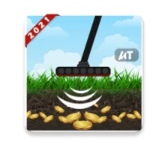What Is Mock Location and Why It Matters
Mock Location is a purpose-built Android utility for developers, QA teams, and privacy-conscious users who need accurate, repeatable location simulation without root. With Mock Location, you can set a custom point, simulate movement, replay full routes, and share test coordinates with apps or teammates. Because Mock Location emphasizes speed, precision, and safety, it turns location-dependent testing into a predictable, low-friction workflow.
Core Benefits: Why Teams Choose Mock Location
Mock Location accelerates app validation, automates scenario coverage, and protects personal location data during demos. Whether you’re verifying geo-fences, testing ride or delivery flows, stress-testing map rendering, or staging customer journeys, Mock Location provides consistent inputs so bugs are easier to reproduce and fixes are easier to confirm. By keeping controls simple and results stable, Mock Location saves time on every test cycle.
Key Capabilities at a Glance
- Pin placement: Mock Location lets you drop precise coordinates and broadcast them instantly.
- Route simulation: Mock Location replays complete paths to test turn-by-turn logic, ETA handling, and progress events.
- Speed control: Mock Location adjusts simulated speed to mimic walking, cycling, or driving profiles.
- Accuracy control: Mock Location tunes horizontal accuracy to explore edge cases and fallback flows.
- Saved locations: Mock Location stores favorite pins and routes for fast reuse.
- Shareable test sets: Mock Location enables collaboration by sharing coordinates and scenarios with teammates.
- Clean UI and toggles: Mock Location keeps controls intuitive, discoverable, and quick.
Who Benefits from Mock Location
- Mobile developers: Mock Location enables consistent pre-release checks for map SDKs, permission flows, and geo-triggers.
- QA engineers: Mock Location standardizes test runs and regression suites with repeatable paths.
- Product managers and designers: Mock Location powers live demos across cities without travel.
- Support teams: Mock Location helps reproduce user-reported issues tied to specific locations.
- Privacy-focused users: Mock Location masks real location during public presentations or screen recordings.
Set a Point, Simulate a Path: How Mock Location Works
Mock Location begins with a map-driven interface. You tap to set a starting coordinate, refine with search and decimal input, then decide between a single-point broadcast or a route-based simulation. Mock Location sends the signal to apps that consume location, allowing you to watch UI elements update, observers fire, and analytics log exactly as if you were there. Because Mock Location is consistent, screenshots and logs remain comparable across devices and releases.
Movement Models and Speed Profiles
Mock Location includes profiles for walking, biking, and driving, and you can dial in custom speeds for special use cases. For example, slow-motion speeds expose timing bugs and UI race conditions. Faster speeds reveal throttling, buffering, and ETA rounding issues. With Mock Location, you can step through a path point-by-point or run it continuously to emulate real travel.
Accuracy and Jitter Controls
Real-world GPS is rarely perfect, so Mock Location gives you tools to model reality. Increase accuracy for crisp blue dots during UI demos, or inject small jitter to validate clustering, smoothing, and snap-to-road behavior. Mock Location makes it simple to test how your app handles weak signals, indoor drift, and urban-canyon effects—without leaving your desk.
Routes, Waypoints, and Geo-Fences
Mock Location lets you create multi-stop itineraries to validate route progress, arrival triggers, and fence enter/exit events. Add waypoints to verify mid-route prompts, or design detours to test rerouting logic. If your app depends on fence-based offers or safety alerts, Mock Location helps you prove those events fire exactly when expected.
Saved Pins, Libraries, and Reuse
Good testing demands repetition. Mock Location stores locations and routes in named libraries so you can rerun a scenario after each build. By keeping a shared set for the whole team, Mock Location ensures developers and QA see the same results and avoid “works on my machine” disagreements.
Collaboration and Sharing
Mock Location supports export and import of coordinates and route definitions, making handoff between roles fast and error-free. A developer can attach a failing route to a ticket; QA can import it into Mock Location and confirm the fix in seconds. This feedback loop keeps quality high and cycle time short.
Privacy and Responsible Use
Mock Location is a test utility, not a tool for breaking rules. Use Mock Location to protect personal location during public demos, to simulate emergencies safely, or to validate features in controlled environments. Always respect local laws, platform policies, and app terms of service. Mock Location encourages responsible use and provides reminders before broadcast.
Clean UI, Clear Feedback
Mock Location foregrounds the essentials: current simulated coordinates, speed, accuracy, and route position. Status chips confirm active broadcast, and prominent toggles let you pause, resume, or switch profiles quickly. Because Mock Location removes UI friction, you can focus on testing outcomes rather than wrestling with controls.
No Root Required
Mock Location runs on standard Android. You don’t need to unlock bootloaders or modify system partitions. This means Mock Location fits corporate device policies, keeps warranty statuses intact, and reduces setup time for teammates. The result is a safer, simpler rollout with fewer blockers.
Performance and Reliability
Mock Location is light on resources and tuned for long sessions. Simulations remain smooth while screen recording or when the device is on battery saver. If apps consume high-frequency updates, Mock Location can throttle to maintain stability. If the OS puts the app to sleep, Smart Resume brings simulations back with the correct route index.
Risk Modeling and Edge Cases
Mock Location helps you probe edge-case geography: border crossings, tunnels, ferries, or mountain passes where signals fluctuate. You can craft short “micro routes” to stress-test onEnter/onExit callbacks, or long endurance paths to watch memory, logging, and analytics behavior. Mock Location gives product teams a safe place to learn before they ship.
Common Scenarios
- Ride-hailing QA: Mock Location runs driver and rider routes to validate surge maps, ETA recalculations, and cancellation flows.
- Delivery logistics: Mock Location checks stop sequences, proof-of-delivery prompts, and late-notice logic.
- Fitness tracking: Mock Location reveals smoothing artifacts, split timing, and elevation assumptions.
- Travel apps: Mock Location verifies landmark prompts, offline caching, and translation timing around points of interest.
- Safety features: Mock Location proves SOS triggers, last-known-location storage, and guardian notifications.
Troubleshooting with Mock Location
If your app doesn’t update, confirm location permissions and ensure developer options allow mock providers. If UI lags, reduce update frequency inside Mock Location. If snapping-to-road behaves oddly, vary accuracy or jitter until the bug surfaces reliably. Mock Location thrives on iteration; small parameter shifts frequently expose hidden assumptions.
Testing Best Practices
- Define success metrics: With Mock Location, pick clear thresholds for accuracy, ETA drift, or event timing.
- Test at multiple speeds: Mock Location reveals bugs that only appear at walking or highway velocities.
- Mix signal quality: Mock Location shows how the app behaves under pristine and degraded conditions.
- Automate reruns: Pair CI builds with a fixed Mock Location route during manual acceptance testing.
- Document scenarios: Attach Mock Location route files to tickets so issues stay reproducible.
Security Considerations
Mock Location never encourages bypassing security controls. Treat simulated coordinates like test data, keep real user data separate, and sanitize logs that might contain sensitive places. When demonstrations require obscuring home or workplace locations, Mock Location provides safe stand-ins without revealing personal movement patterns.
Design Philosophy
Mock Location is built around clarity: one purpose, minimal clicks, maximum signal. Every control in Mock Location has a direct testing outcome, and every readout ties back to a verifiable event in your app. By removing noise, Mock Location keeps attention on product quality.
Accessibility and Localization
Mock Location supports English plus many more languages to help global teams collaborate. Clear contrasts, readable typography, and descriptive labels keep Mock Location friendly during bright outdoor tests or late-night sessions. Because teams span time zones, Mock Location focuses on reliability and self-explanatory flows.
Version and Requirements
- Name: Mock Location (version 3.0)
- Package: com.antiatlasdev.mocklocation
- License: Free
- Operating System: Android
- Minimum Android: 5.0 or higher
- Category: Utilities
- Language: English + 45 more
- Author: AntiAtlasDev
- Downloads: 4
- Release Date: Oct 27, 2025
- Content Rating: All ages
- Advertisement: Not specified
These details confirm that Mock Location is broadly compatible, lightweight, and ready for production teams that value predictable test inputs.
FAQs
Does Mock Location require root? No. Mock Location is designed for standard Android devices with developer options enabled for mock providers.
Can Mock Location simulate full routes? Yes. Mock Location supports multi-waypoint routes with adjustable speed and accuracy to match real-world travel.
Will Mock Location help with geo-fence testing? Absolutely. Mock Location makes enter and exit events reproducible so you can verify timing and notifications.
Is Mock Location safe for demos? Yes. Mock Location helps you keep personal location private during recordings and presentations.
What if my app ignores Mock Location? Check permissions, ensure developer options are configured, and confirm that no enterprise policy overrides mock providers. Then re-run with Mock Location active.
Can I share scenarios with teammates? Yes. Mock Location lets you export and import coordinates and route files so entire teams can reproduce the same behavior.
Responsible Use and Legal Notes
Mock Location is intended for testing, demonstrations, and privacy-preserving scenarios. Always respect app terms, workplace policies, and local regulations. Avoid using Mock Location to misrepresent presence for benefits or access. The goal of Mock Location is better software, safer demos, and stronger privacy—not rule evasion.
Conclusion: Build Confidence with Repeatable Location Testing
Mock Location gives modern teams the control they need to validate location features with precision. By combining route simulation, speed and accuracy tuning, saved scenarios, and a clean interface, Mock Location converts complex in-the-field workflows into reliable indoor tests. Choose Mock Location to reduce flakes, speed up QA, and protect privacy during every demo. When your app depends on coordinates, Mock Location is the simplest way to deliver consistent results—again and again.









